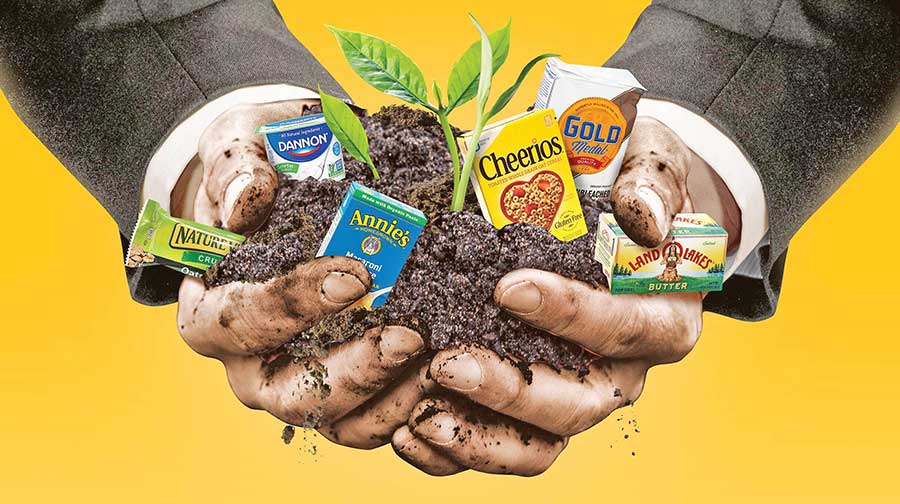Salt therapy – All you need to know
- 24 Feb - 01 Mar, 2024
There’s a lot of buzz about urgent steps environmental experts are advocating to rescue the planet for future generations. Perhaps less talked about is how these initiatives will affect human health right now and in the coming years. Here’s what three much-discussed moves designed to create a greener future mean for your well-being and that of your family.

After centuries of pollution, there is a lot of carbon in the atmosphere, and it needs to be removed to help slow rising temperatures. Using more natural farming practices, such as an approach known as regenerative agriculture, is a great way to safely store excess carbon in the ground.
Why it’s good for the environment: High-quality (“living”) soil teems with colonies of fungi, bacteria, nematodes, and other tiny organisms. All these critters naturally remove carbon from the air and store it underground, but generations of conventional tillage and chemical-heavy farming have decimated their numbers.
Growing food organically isn’t enough, because without regenerative practices, organic soil becomes depleted as well. That’s why regenerative farmers employ techniques like planting extra soil-protecting crops (called cover crops); avoiding pesticides, herbicides, and insecticides; introducing an array of beneficial microbes to the ground; and not tilling the land.
How it’s good for your health: When farmers adopt the above practices, fewer pesticides and other toxic chemicals make their way from fields into drinking water. Plus, foods grown in healthier soil are probably better for us, though more research is needed. Robust plant roots can stretch more than 50 times as far as those grown via conventional agriculture, and that lets them discover and soak in additional trace minerals and other nutrients our bodies absorb when we eat them.

The cars, trucks, buses, ships, trains, and planes we use to get from Point A to Point B generate the most greenhouse gas emissions. Significant changes in this area will help drive huge improvements in the quality of our atmosphere.
Why it’s good for the environment: The nitrogen dioxide (NO2) that flows from the tailpipes of our vehicles reacts with other chemicals in the air to form particulate matter and ozone, a powerful heat-trapping gas. Fortunately, cars, trucks, and buses that are electric don’t release NO2, so putting more of them on the road and using far fewer gas guzzlers will lower ground-level ozone over time. Less ozone in the atmosphere may result in a sky so clear you can see for miles.
How it’s good for your health: Breathing air without all that NO2 may mean less coughing, wheezing, breathing trouble, respiratory infections, and asthma, according to the Environmental Protection Agency. If even a quarter of a metro area’s vehicles were converted to electric, 30 to 50 premature deaths a year would be prevented there.
Retiring old buses, diesel trucks, and inefficient motorcycles is especially beneficial for reducing NO2 and diesel-related particulate matter. Switching to plug-in cars – or, better yet, biking and walking when we can – will also help a lot.
Today, most energy comes from burning fossil fuels, mainly coal and natural gas; the former is known as a “dirty fuel” because of its high carbon content and the fact that burning it to make power belches toxins into the air. Fortunately, there are many renewable energy alternatives, including wind, solar, hydropower, and biomass.
Why it’s good for the environment: Burning coal and natural gas creates carbon dioxide (CO2) and methane, heat-trapping gases that are among the biggest culprits in raising temperatures around the globe. One reason CO2 is so bad is that it lingers in the atmosphere for hundreds of years, and in some cases for more than a thousand. Extracting gas through fracking (blasting very hot water, sand, and chemicals into subterranean rock to force oil or gas to the surface) also releases methane.

How it’s good for your health: When burning gas and especially coal, conventional power plants spew particulate matter – a.k.a. soot – into the air. These tiny toxins easily enter our lungs and bloodstreams as we breathe, resulting in lung cancer, stroke, cognitive decline, and the premature deaths of more than a hundred thousand people. Researchers from Johns Hopkins found that Pennsylvania residents with the highest exposure to fracking were twice as likely as others to experience migraines, chronic sinus symptoms, and fatigue. Growing evidence suggests that fracking poses other serious health risks too. Renewable energy doesn’t create these issues.
COMMENTS